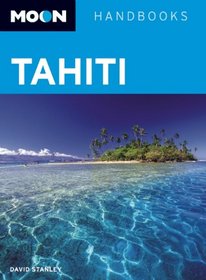Moon Tahiti, the 7th edition of renowned traveler David Stanleys work in the Moon Handbooks series, is as comprehensive, up-to-date and enlightening as ever. Containing 47 detailed and easy-to-use maps, the guidebook describes the must-see sights, activities, restaurants, and accommodation available not only on Tahiti, but on all the other islands in French Polynesia as well, including invaluable insights into tourist highlights on Moorea, as well as on the Leeward, Austral, Tuamotu and Gambier, and Marquesas Islands. In addition, in his inimitable environmentally aware way, he provides an informed analysis of the land itself, its flora and fauna, its history and government, its economy, its people and culture, and the arts and entertainment opportunities granted by French Polynesia, so that the book is a valuable source of information for tourist and armchair traveler alike. For the former, he supplies a chapter on such essentials as transport, visas and officialdom, customs, and health and safety, while for those who wish to approach their trip with the added insight to be gleaned from other sources he provides a glossary, phrasebook, and a list of suggested reading and Internet resources.
That Stanley truly loves these islands is clear from start to finish. His intimate knowledge of the islands is rivaled only by the fluency of his writing. His balanced outlook on French Polynesia allows him to retain an objective stance throughout, enabling him to pinpoint both the merits and the demerits of the islands. For example, he doesnt hide the fact that the cosmopolitan city of Papeete becomes a ghost town on Sunday afternoons, as life washes out into the countryside, so best avoid at such times. Stanleys style is concise and factualhe provides you with a great deal of information in a limited number of words. His main intent is to give a complete picture of each place so that you can make informed decisions about how you wish to spend your time in the islands. Stanley consistently keeps the primary focus of the reader in mind, so that no matter whether you are more interested in sports, culture and the arts (his references to the leading French Post-Impressionist, Paul Gauguin, are numerous), the natural beauty of the islands, or the more historic and religious aspects of French Polynesia, you are bound to find much that appeals to your palate.
Moon Tahiti is well illustrated throughout with black-and-white photographs of local architecture and scenes, in addition to maps of many of the 118 islands and towns that form part of this archipelago set in the South Pacific Ocean. Stanley also provides a great deal of background information on various cultural practices, aspects of island lifestyle and fascinating biographical overviews of outstanding local characters that he sensibly sets aside in text boxes scattered throughout the main text, so that they do not disrupt the flow of his central argument. If you have ever dreamed of listening to the rustling of palm trees swaying in the breeze while watching islanders gyrate their sinuous bodies in time to the rhythm of exotic melodies, this book is for you. As Stanley writes, Welcome to paradise!
That Stanley truly loves these islands is clear from start to finish. His intimate knowledge of the islands is rivaled only by the fluency of his writing. His balanced outlook on French Polynesia allows him to retain an objective stance throughout, enabling him to pinpoint both the merits and the demerits of the islands. For example, he doesnt hide the fact that the cosmopolitan city of Papeete becomes a ghost town on Sunday afternoons, as life washes out into the countryside, so best avoid at such times. Stanleys style is concise and factualhe provides you with a great deal of information in a limited number of words. His main intent is to give a complete picture of each place so that you can make informed decisions about how you wish to spend your time in the islands. Stanley consistently keeps the primary focus of the reader in mind, so that no matter whether you are more interested in sports, culture and the arts (his references to the leading French Post-Impressionist, Paul Gauguin, are numerous), the natural beauty of the islands, or the more historic and religious aspects of French Polynesia, you are bound to find much that appeals to your palate.
Moon Tahiti is well illustrated throughout with black-and-white photographs of local architecture and scenes, in addition to maps of many of the 118 islands and towns that form part of this archipelago set in the South Pacific Ocean. Stanley also provides a great deal of background information on various cultural practices, aspects of island lifestyle and fascinating biographical overviews of outstanding local characters that he sensibly sets aside in text boxes scattered throughout the main text, so that they do not disrupt the flow of his central argument. If you have ever dreamed of listening to the rustling of palm trees swaying in the breeze while watching islanders gyrate their sinuous bodies in time to the rhythm of exotic melodies, this book is for you. As Stanley writes, Welcome to paradise!




